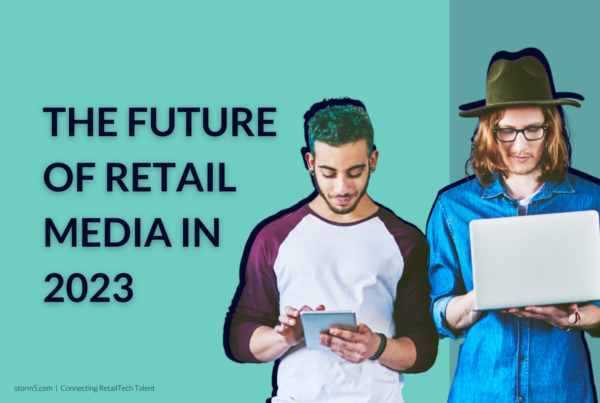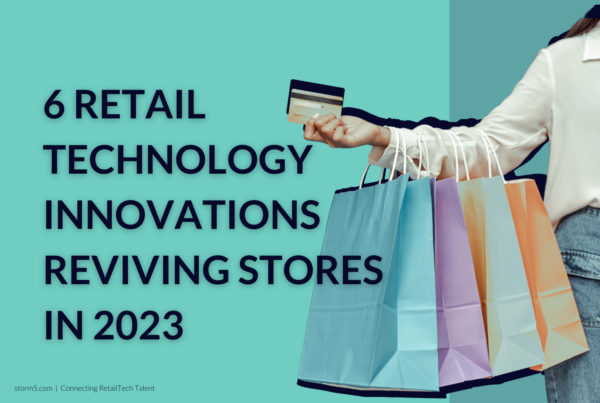4 InStore Tech Trends That Will Shape 2023
The need for In-store Technology Large and small retail businesses can leverage advanced technologies to enhance every aspect of their customer service. This is specifically…

The need for In-store Technology
Large and small retail businesses can leverage advanced technologies to enhance every aspect of their customer service. This is specifically important for the in-store customer experience.
InStore Tech can directly impact consumers and improve the efficiency of retail teams, and businesses that develop innovative solutions can gain a competitive edge and increase profits. So, let’s jump into why InStore tech is so useful and what trends will take the industry by storm in 2023!
Bridging the gap between online and offline experiences
Many brick-and-mortar stores now offer various purchasing options, including buy online and pick up in-store (BOPIS) services, same-day delivery, and online shipping. As a result, businesses need to implement point-of-sale (POS) systems intelligently to accommodate these new ways of ordering goods. For instance, how an item is ordered online can affect the store’s sales floor quantity in the database, and if a product is put on hold for a pickup order, it may reduce the count on the sales floor. Therefore, modern POS systems must be equipped to handle such situations and provide accurate information. This requires more than just having systems in place for online and in-store purchases. It requires a unified and connected system that integrates with other technologies.
Software engineers are working to overcome the challenges of integrating online and offline transactions, inventory, and promotions across all physical and online store locations when creating the next generation of POS systems for retail businesses.
In-store XR implementation
Implementing Extended Reality (XR) solutions into the retail and eCommerce environment opens a number of opportunities for businesses. Companies in the eCommerce world can allow consumers to test and experiment with products before purchasing them, reducing the risk of returns and lost revenue.
XR is taking over the retail world as the reason that drives users to a specific website or even brick-and-mortar stores. In fact, Augmented Reality (AR)firms claim that 61% of consumers prefer retailers with AR experiences, and 71% of consumers say they would shop more if they used AR.
XR enables solves the pain point for most customers: effective user participation. Gamification and visualization achieved through XR technology aid customers throughout the entire sales funnel, from product introduction and visualization to post-purchase assistance. Moreover, XR can be used to deliver the brand’s values to consumers in engaging experiences, reinforcing consumer expectations, and making them feel more connected.
Surely, the biggest advantage for retailers utilizing XR in their physical stores is the possibility to have a significant edge in terms of data analysis. Computer vision and augmented reality open new ways to collect data and AR apps can capture data in real-time and present insights into areas such as in-store traffic, hot spots, product interactions, and user behavior.
Self-checkouts
According to a customer study conducted by SOTI in 2019, 73% of respondents preferred self-checkout. By implementing a self-service POS system, customers can enjoy a faster checkout process and an overall improved shopping experience. This also allows businesses to sell more and optimize their resources.
Compared to waiting for a cashier to locate a customer account and bag items, a user-friendly self-checkout POS is much quicker. Furthermore, offering a self-checkout option gives customers more autonomy in completing their shopping experience. Particularly for those in a hurry, self-checkout provides a speedy checkout process with minimal human interaction.
On average, self-checkout machines take customers just under four minutes to complete their transactions, enabling them to multi-task by listening to a podcast or unwinding after a busy day at work.
Removing checkouts altogether
The concept of checkout-free shopping is an innovative cashier-less checkout system that utilizes advanced technology to detect shoppers’ product preferences and automatically bill them at the end of their shopping trip. This cutting-edge approach involves the use of QR codes, smart shopping carts, RFID tags, and machine vision to process transactions, invoices, and billing.
The U.S. self-checkout systems market is projected to grow significantly, with a market size estimated to reach USD 2.97 billion by 2028 according to Research and Markets. Retailers are offering self-checkout services to improve transaction efficiency and enhance user experience, which is likely to further fuel market expansion.
The current self-checkout solutions integrate cash and cashless features and it also, enables retailers to personalize shopping experiences based on a shoppers’ preference, promising continued industry growth. For example, in January 2020, Weis Markets Inc, a U.S. grocery retailer, integrated Toshiba Global Commerce Solutions’ self-checkout system across 198 stores to enhance their customers’ checkout experience.
We are Storm5
Storm5 aspires to be at the epicenter of the RetailTech industry. We connect the best RetailTech talent with the most innovative companies around the world. We are specialized recruiters who work with the best companies in all RetailTech sectors. Our expert consultants have cultivated a network of highly specialized senior talent in the areas of Data & Analytics, Engineering & DevOps, Product Management, and Sales & Marketing.
If you’re a startup or scale-up looking to grow your team, contact us here, and follow us for more industry news.





